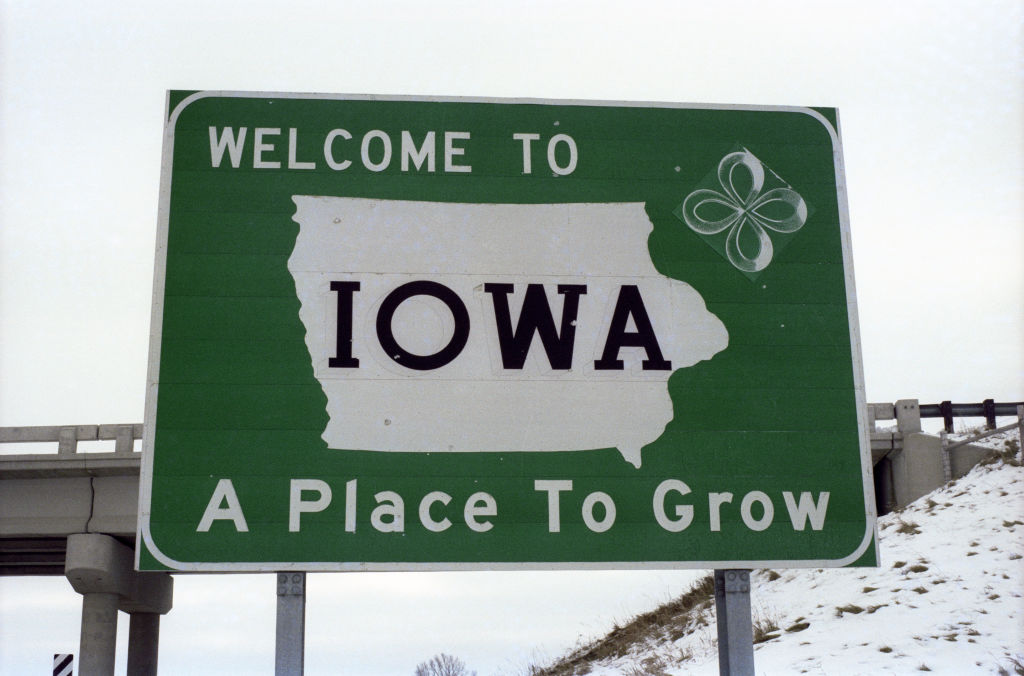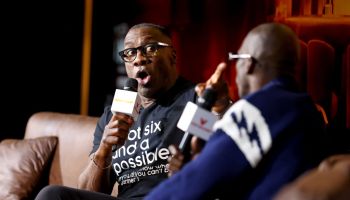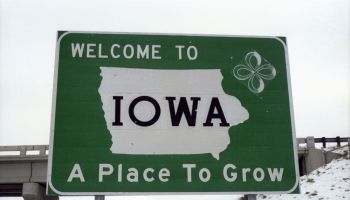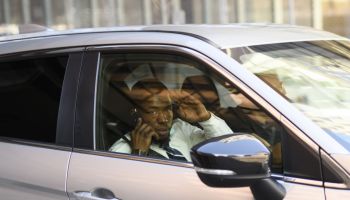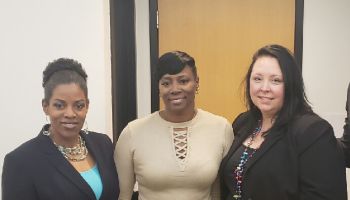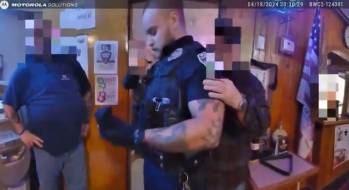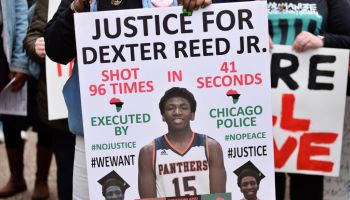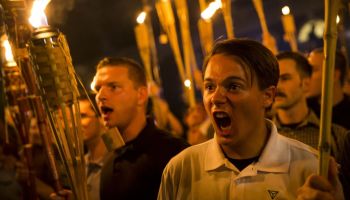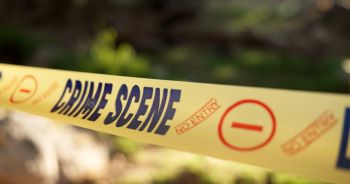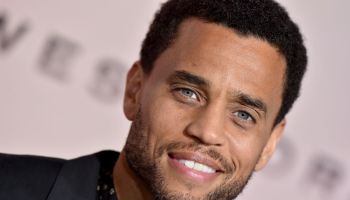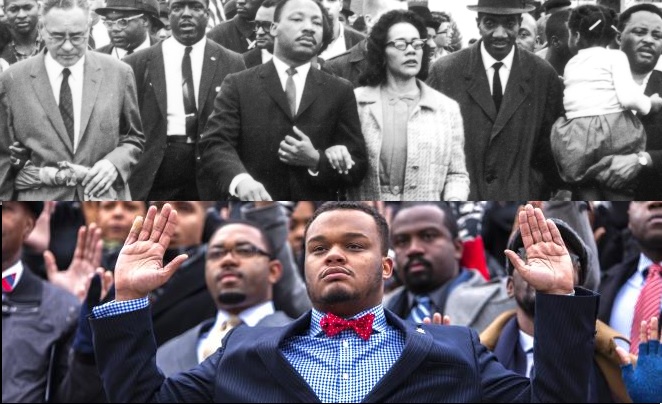
Top: Dr. Martin Luther King, Jr. leads a protest march from Selma, Ala. in 1965;Bottom: Congressional staffers hold a “Hands Up” protest in 2014 (Getty Images)
UPDATED Thursday, March 5, 2015, at 1103 a.m., EST–
The Civil Rights Movement of the 20th Century was perhaps the most significant call for justice in modern times. Replete with highs and lows, the movement’s aim for racial equality for Black Americans was met with violent resistance. The response to the resistance was varied, but nonviolence held the most sway.
Following the example of India’s Mahatma Gandhi and his practice of nonviolent civil disobedience, the emerging leaders of the movement in America faced incredible odds. From the Montgomery Bus Boycott in 1955, to sit-ins across the Deep South, to the Bloody Sunday confrontation on the Edmund Pettus Bridge 50 years ago on Saturday, activists endured inhumane treatment at the hands of segregationists and authorities.
Most amazing was how those brave men, women and students suppressed the natural inclination to defend one’s self. This restraint was the result of extensive training led by members of the Congress of Racial Equality (CORE), the Student Nonviolent Coordinating Committee (SNCC) and the Southern Christian Leadership Conference (SCLC).
NewsOne spoke with Bruce Hartford, who operates the Civil Rights Movement Veterans website. Hartford graciously shared tales from his time in the field, remarking that much of what he faced in the 1960s mirrors what young activists of today have undertaken.
“We conducted training in nonviolent strategies and tactics, and this was mainly to both have effective protests and also for our own safety,” Hartford explains.
“For example during a sit-in in Crenshaw County, Alabama and there was a dozen of us, mostly students. We were attacked by a mob of about 50 White racists, but because we trained prior to going to the sit-in — fortunately, because of the training — nobody was injured,” he continued.
On Hartford’s site, there is a section devoted to nonviolence. The documents in the section feature some of the greatest minds of the time, including Diane Nash, James Farmer, Julian Bond and others.
We asked Hartford to recall what many historians of the period regard as the pivotal point of the Movement, in what is universally known as “Bloody Sunday.” That confrontation at the at the start of the Selma to Montgomery marches in Alabama that gripped the nation in 1965, and are the subject of the film Selma.
“I really think that broke the back of the resistance to civil rights. It broke the back of what they called the ‘southern way of life,’ which was oppression, mistreatment and second-class citizenship of non-Whites,” said Hartford.
Hartford also shared an insider’s view of the training and how brutal they were. He recalled a story of a young girl he was training to go into the field, asking her to hit him as hard as she could. After a bit of convincing, the girl knocked Hartford “clear across the room.” He responded by hopping up and telling her that’s how you handle such instances.
In more recent times, several youth-led movements across the nation have sprung forth and given rise to the practice of nonviolent civil disruption. This right has been challenged lately, as many have seen in the wake of the incidents in Ferguson, New York, Washington and other urban centers. These protests have also spilled out in smaller cities, and have remained largely free of violence.
Monica Dennis, the Regional Coordinator for the Northeast Region for #BlackLivesMatter, gave her insights to NewsOne on what she and her colleagues are imparting upon young activists today about nonviolence.
“We partner with many organizations across the country on these matters, so what we do is try to get individuals grounded on what we mean when we say Black lives matter,” explained Dennis.
“From there, we explain to them the actual tactics used to engage with law enforcement, and also the tactic of how we’re going to show up for one another. There are times we have mobilizations of tens of thousands of people, so we are strategic on who will do what in these instances,” Dennis continues.
Dennis laid out the various roles in which #BlackLivesMatters staffers and volunteers are thrust. Some serve as legal observers of police while on marches, and are trained to videotape incidents, take down badge numbers and other tasks. Dennis said her group is typically under surveillance by authorities and this tactic helps protect them.
The group employs legal counsel and participants are trained in what the marchers’ rights will be during mobilizations. There is also training on how to marshal a crowd, and recognizing that not every attendee at public events comes there with pure intentions.
Hartford said he saw similarities in what #BlackLivesMatters and other protesters are doing today, compared to the work he was part of in the 1960s, even noting the similar agitation felt by the youth. Dennis shared an admiration for the civil rights activists of old, recognizing that the urgency of what is unfolding now is fueled by the knowledge of the past.
While it isn’t readily apparent, a bridge exists between these generations, given recent events. They are connected in the spirit of nonviolence and their mission to promote a new paradigm.
Learn more about the Selma to Montgomery marches and the film Selma (directed by Ava DuVernay, written by Paul Webb and starring David Oyewolo, Cuba Gooding, Jr. and Oprah Winfrey) at SelmaMarchOn.com.
